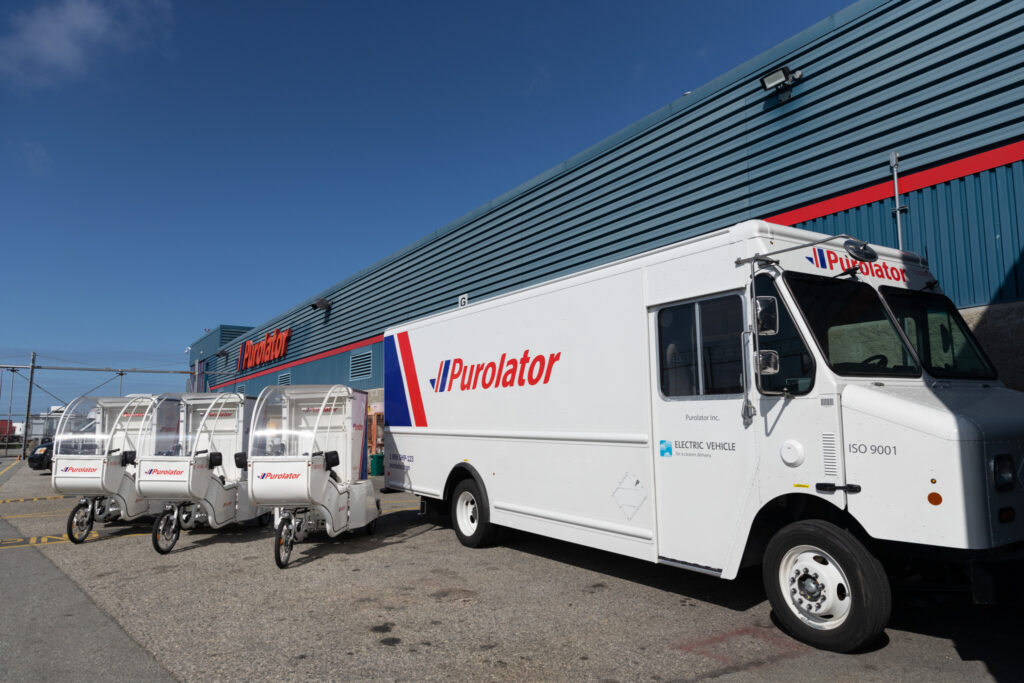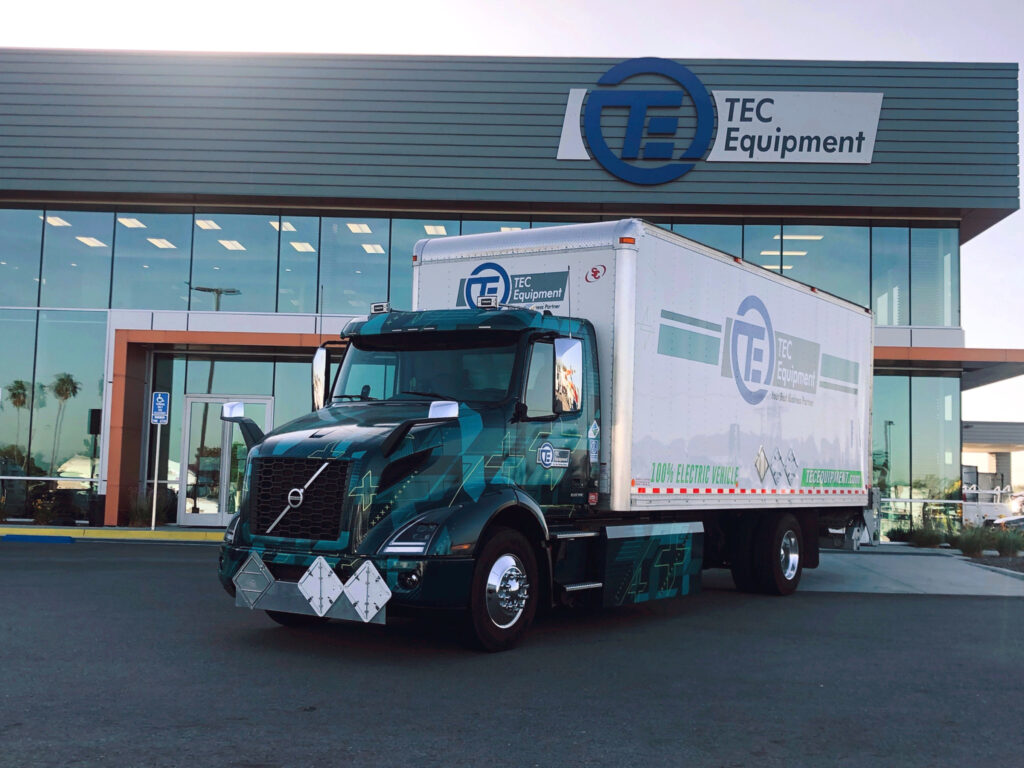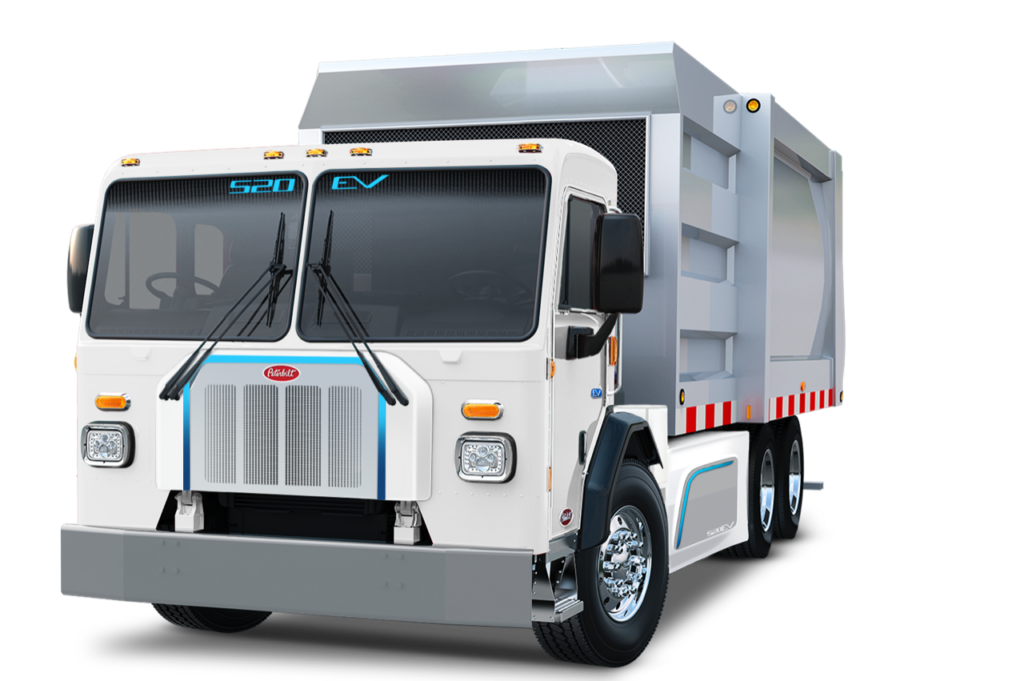Medium-duty provides fertile ground for proving up electrification
When Purolator put out a Request for Proposals in search of its first fully-electric truck, one of the key elements it was looking for was support.
Of course, there were other requirements. Cost. Range. Size and weight of the battery packs. But after-sales support was essential, according to Serge Viola, director, national fleet with Purolator. Motiv Power Systems of California won the bid and supplied Purolator with five 18-foot electric box trucks built on a Ford F-59 chassis, with Motiv supplying the electric powertrain.
One of the ways it won the bid? It has sent a full-time technician to work out of Purolator’s Vancouver facility for three to six months. He’ll train technicians and drivers on how to work on and operate the vehicles.
“You don’t have a successful launch unless you have the support of the vendor,” Viola told Truck Tech.
As of early April, the Motiv technician had trained 15 drivers on how to operate the vehicles. He has also done a show-and-tell of sorts, for anyone interested in the emerging technology. But with the trucks now deployed, Viola is expecting maintenance requirements to be significantly reduced compared to the diesel trucks that dominate the fleet today. And Purolator’s own technicians are eager to roll up their sleeves and begin working on the units. The electric trucks appeal to an emerging breed of young, tech-savvy technicians, Viola said.
“They like what they’re seeing. There’s less maintenance and more technology and the younger technicians that are very savvy on computers and diagnostics, they love it. This is their world. They’re not into changing fluids, oils, greasing vehicles and mundane tasks,” Viola said. “They’re into high-tech.”
It helps that Purolator has dipped its toes into these waters before. While the Vancouver deployments represent the courier company’s first all-electric trucks, it has run more than 500 hybrids over the years. Those hybrids had electric motors supported by the internal combustion engines on the truck. At the time, battery packs were too heavy and expensive to be viable on their own.

“Today, with the price of batteries coming down, and better technology and better range, it makes sense to have one powertrain versus two. Otherwise, you have a heavier vehicle and a more complex vehicle,” Viola reasoned.
Purolator hired an electrical consultant to determine if it had enough power on-site to keep the trucks charged. It found its power supply was adequate for the initial five trucks, with room to add more. It’s now in the process of going through the same exercise at its other locations across Canada.
In Vancouver, it installed five Level 2 240-volt/80-amp chargers, mounted to the ceilings with pull-down, roll-mounted power cables. This keeps the chargers in a safe area “where people can’t get at it,” and also away from any ground water that collects on the terminal floor. A wall-mounted charger was installed in the shop so the trucks can be charged while being serviced.
The trucks are driven about 127-160 kms a day, Viola said. They are equipped with three BMW batteries with 127 kWh power output. Drivers reportedly love operating them, due to the instant torque, noise-free operation and regenerative braking.
“So far, the feedback has been positive. There’s been no negative reaction from any of the drivers,” Viola said, adding three drivers have been trained per truck. For Purolator, this is its first foray into fully-electric trucks but it plans to greatly expand the fleet. Viola is preparing the case for upper management and the Board of Directors to expand its electric fleet across Canada.
“We are going to do a study across the country to see, if we were to convert 10% or 15% of our fleet [to electric], what would we need to do at each facility to make that happen? What would it do to technician training, parts inventory, how does it affect the whole structure and processes in each location and how would it change for the couriers and the technicians?” Viola explained. “This is the start of something much bigger and if we’re going to be GHG-neutral by 2050, we have to start now.”
Medium-duty leading the charge
Purolator’s story is not unique. The medium-duty trucking segment is widely seen as the most viable for electrification today. The trucks tend to run low daily mileage, return home daily for charging, and employ lots of starts and stops to fully take advantage of regenerative braking.
Regenerative braking captures the energy created under braking and puts it back into the battery packs to increase range or reduce the battery capacity needed on-board the truck.
“We’ve seen interest from mostly larger fleet customers,” said Brian Tabel, executive director of marketing with Isuzu when asked about growing interest in electric trucks. “Everything from beverage and food, to pickup-and-delivery, to the big leasing companies.”
Medium-duty electric trucks are already on the market today, with a full pipeline of new models at various stages of development. Steve Slesinksi, director, product planning with Dana, said during a recent North American Council for Freight Efficiency boot camp for electric vehicles that medium-duty applications are well suited because they typically operate only a single shift, and put on 160 to 180 miles (256 to 288 kms) a day.
“They can typically go up to 200 miles (320 kms) a day,” he said of today’s medium-duty electric trucks. “The stop-start cycles are ideal, because they can recharge the batteries every stopping cycle.”

The trucks require a different type of driving style to fully take advantage of the regenerative braking, but once they are accustomed to it, driver satisfaction is enhanced, Slesinksi said, noting one-pedal operation can frequently be achieved by taking advantage of the regenerative braking.
“But you can’t drive around with the windows rolled down and the heater on,” he added. “You need that energy for propulsion.”
Matt Wetta, national account manager, alternative powertrain with Peterbilt, said the key is putting the trucks into the right application.
“I would not say [EVs] are well-suited for every job,” he acknowledged. “But in certain applications they may not only be well-suited, but may even be better than diesel.”
Payload is a key consideration, as the battery packs will in most cases exceed the weight of the diesel engine and transmission that they replace. Wetta said the additional weight of an electric vehicle can be up to 1,000 lb.
Because frequent stops actually provide energy for propulsion, refuse applications have stood out as an ideal candidate for electrification. “Some will do 1,000 stops a day, every 60 feet,” Wetta noted. Electrifying a refuse truck reduces brake pad replacements, and the cost of fuel that’s burned every time the driver steps on the throttle to get back to speed.

In terms of energy costs, Wetta said depending on application, $300,000 spend on diesel over the life of a vehicle can be as little as $50,000 in electricity.
PepsiCo has been an early adopter of the technology and made the case for their use when NACFE issued a guidance report on electrifying medium-duty trucks.
“Medium-duty vehicles with one-shift-per-day operations offer the most straightforward application for battery electric vehicles; as trucks sit idle for long enough periods of time, they can be charged at cost-effective rates and with fewer infrastructure demands,” said Keshav Sondhi, director, fleet engineering and sustainability PepsiCo.
Have your say
This is a moderated forum. Comments will no longer be published unless they are accompanied by a first and last name and a verifiable email address. (Today's Trucking will not publish or share the email address.) Profane language and content deemed to be libelous, racist, or threatening in nature will not be published under any circumstances.